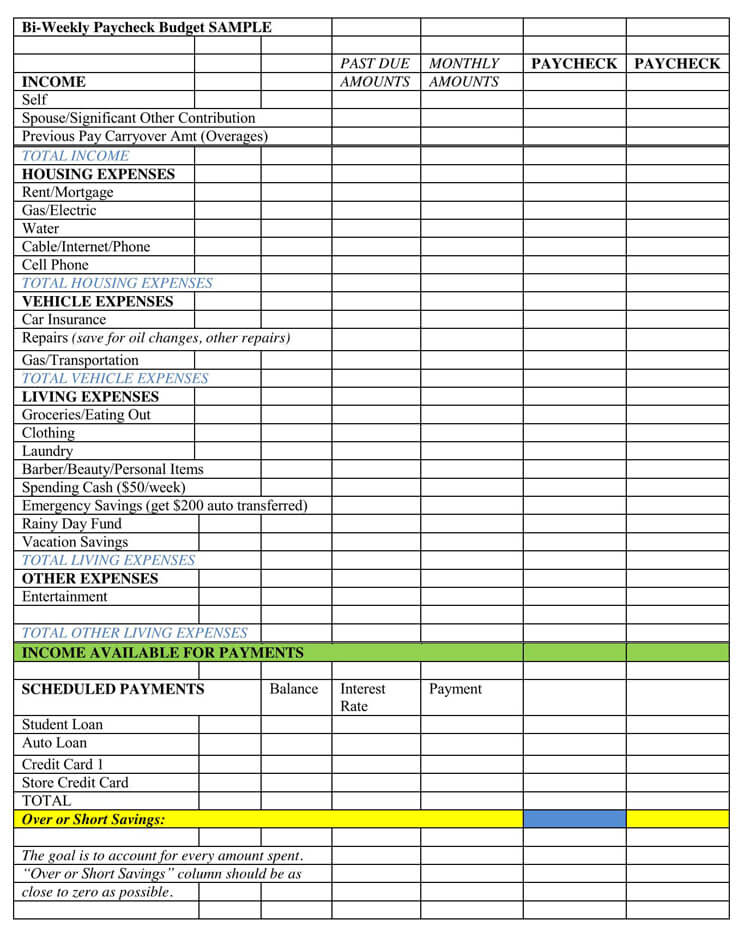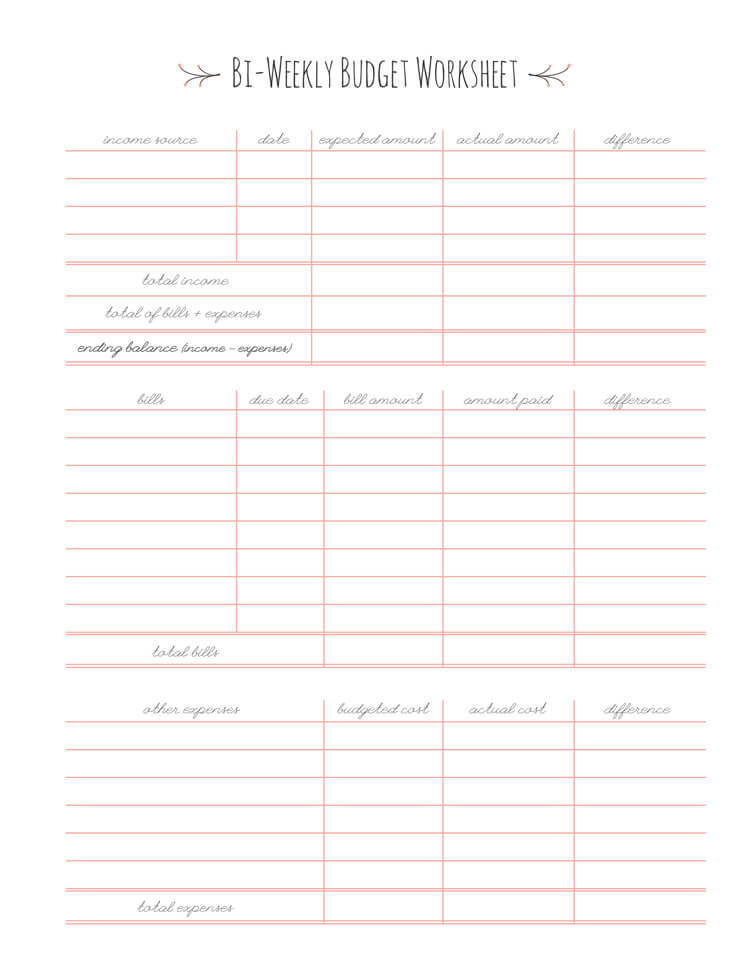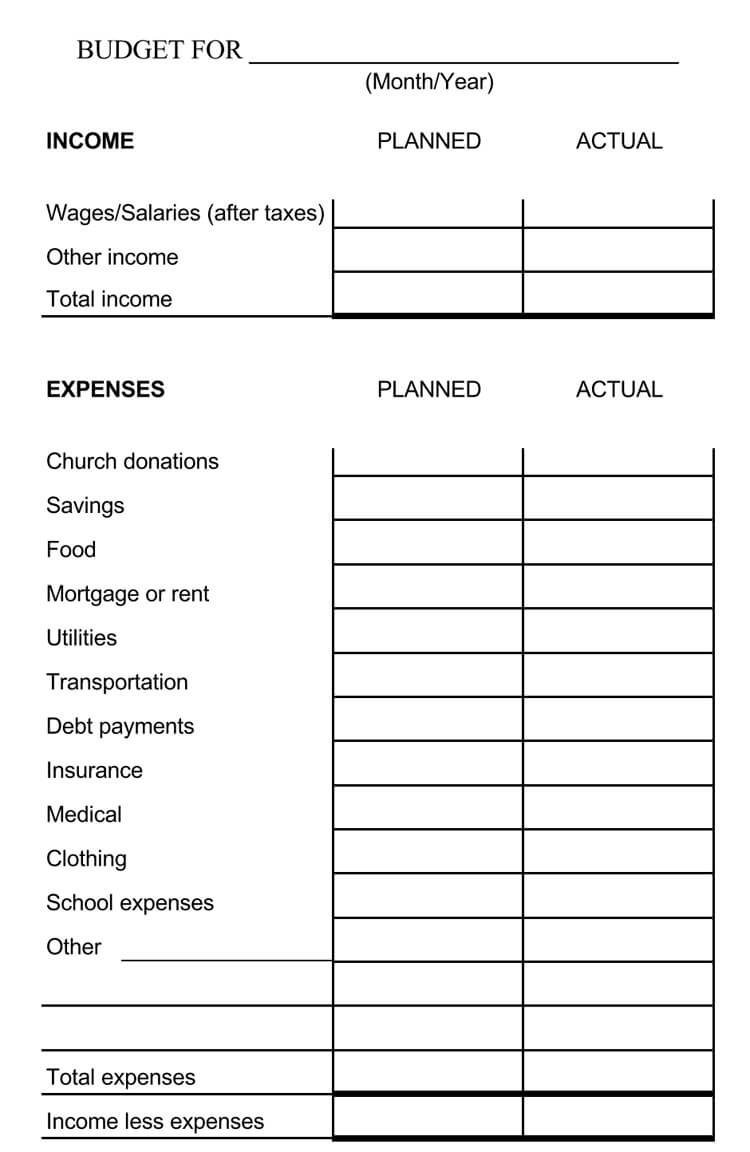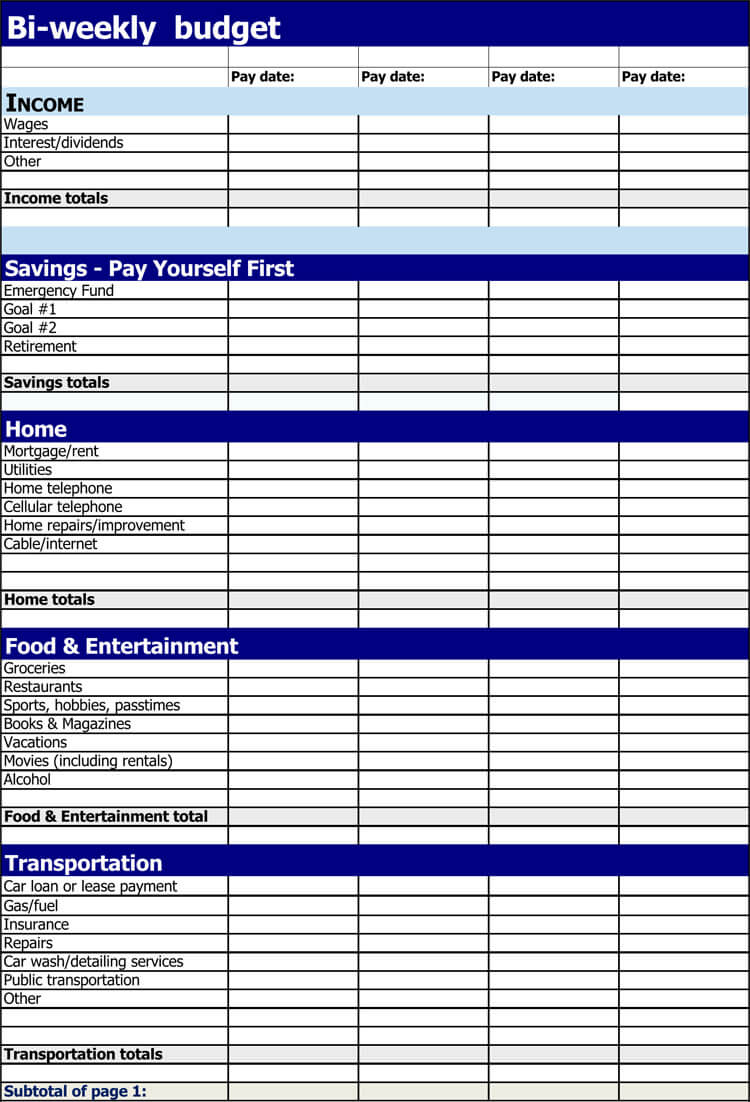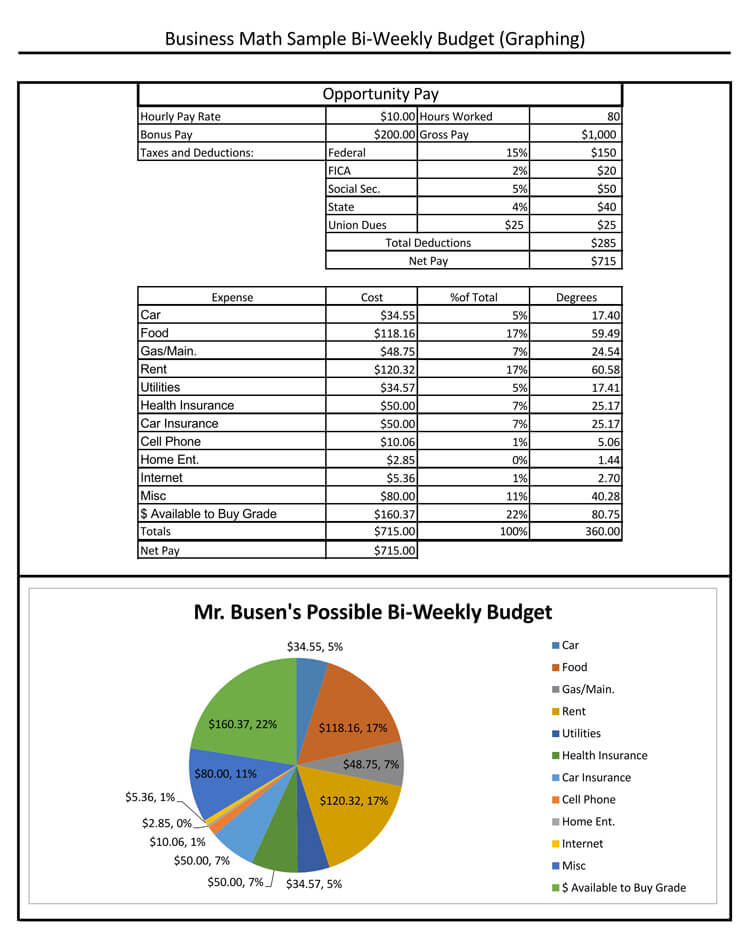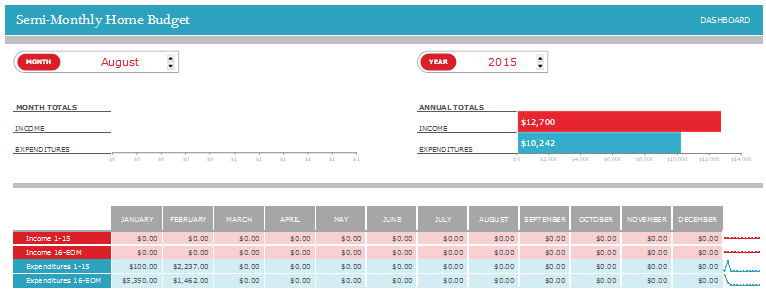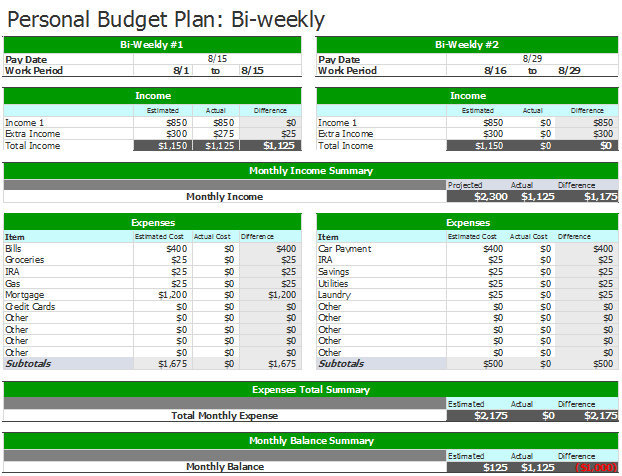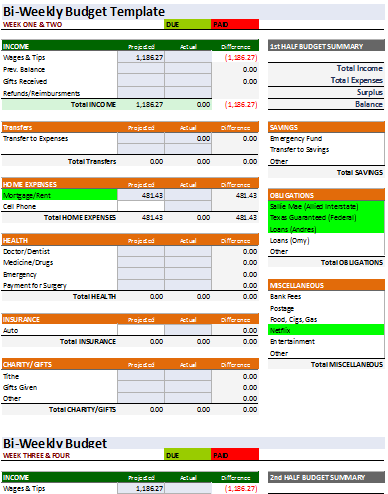The budget is the tool par excellence that every blog or personal finance book recommends to be in control of our money; however, the way in which it is traditionally used may not be the most adequate to ensure that we make our salary pay.
In this article, we’ll show you how to create a bi-weekly budget template, when it’s worth doing, and why doing it the traditional way may not be enough; Therefore, we will show you an alternative with which you can improve your financial planning.
What is a budget?
In a strict sense, budgeting means calculating the monthly income and expenses of any economic activity in advance. Read another way; it is a set of assumptions about what will happen to our finances in the future.
Bi Weekly Budget Template
When and How to Make a Budget
Whenever we want to have a simple idea of how much money we have and what we will spend it on in the next days, weeks, or months, it is convenient to make a budget.
Usually, it is recommended to always do it before having the money in our hands and for periods of time that are neither too short (few can get into the habit of budgeting on a daily basis -although they do it unconsciously-) or very long (because it is more likely that they will not do so). Comply); Let’s say that doing it once every month is the default option.
To do so, just follow these steps:
- Decide the time period for which we are budgeting.
- Make a list of all the income that will come to us in that period of time.
- Add the values of our income to obtain the total income.
- Make a list of all the expenses that we will have to carry out in that period of time.
- Add the values of our expenses to obtain the total cost.
- Subtract the value of our expenses from the value of our income.
- Analyze the total.
The total of our budget must always be positive; at least it must be equal to zero. This last option, however, is highly inadvisable.
The reason is that the fairer our budget, the less space we have for contingencies, and, in case of one, we may have to look for a loan or start to stop paying the debts we already have or sacrifice some of our basic expenses.
Traditional Budget vs Bi-Weekly Budget Template
It is clear that bi-weekly budget template is a very useful tool to help us decide how much we want and can spend at any given time; However, this way of doing it has a huge problem for most people: it assumes that all expenses and all income are made at the same time.
Consider the following situation:
You have two bi-weekly payments in the month, on days 1 and 15. However, on day 5 you have to pay the rent (which is equivalent to half of all income for the month), on day 10 you have to pay public services and you must have money for transportation and food. After the 15th, you don’t have bills to pay, and you only have to worry about the most basic expenses.
If we gave you values and made a bi-weekly budget template for this situation, it would probably be positive; what’s more, surely we would use the money that we have left to go out partying and give ourselves tastes in the second fortnight. However, it is most likely that by the 7th of the month (one week before receiving the second payment of our salary), we will no longer have money, and we will have to borrow or make an advance on the credit card while we get the fortnight.
In this scenario, the budget – done in the traditional way – can be a tricky tool for our finances. What can we do then?
How to Create a Budget on Bi-weekly Income
Most traditional employees are paid every two weeks, the best budget strategy is to create a monthly budget template in your bi-weekly income, and that’s what we are going to explain!
Many employees (especially those who work in sales, including real estate agents) receive a bi-weekly paycheck that ends with three payslips in a few months. Remember that there are 26 bi-weekly periods in a year!
This is because they receive a bonus based on the commission. You will receive a bonus check either regularly or sporadically.
Either way, the bonus check is a big win. You can use the excess cash to drive off debt, save for retirement, save for the condo you want, or spice up your emergency fund. You can make purchases like a new dishwasher, your next car, or a family vacation.
Step 1: Create your budget categories
The first step is to create the expense categories for your monthly budget. Your expenses should normally fall into two categories: mandatory and discretionary.
- Mandatory expenses: Mandatory expenses must be paid monthly and include items such as rent, groceries, and utilities.
- Discretionary expenses: Discretionary expenses are non-essential expenses, such as eating outside, going to a movie, and entertainment.
Step 2: Identify your monthly expenses
The next step is to identify your expenses and allocate them in the two categories you created earlier.
Create a bi-weekly budget template that covers the following basic requirements:
- Your rent/mortgage
- Utilities
- Health insurance, life insurance, and car insurance
- Reserved money for car repairs and home repairs
- Reserved money for retirement savings
- Savings for your kids’ college education
- Savings for vacation
- Savings for medical expenses
- Savings for replacing your mobile, laptop, watch, TV, and other digital devices.
You get the idea. List down the expenses on a worksheet without forgetting anything.
Step 3: Allocating income to expenses
When allocating your income to your expenses, start with the mandatory expenses. If there are funds left, allocate the remaining amount between your flexible expenses based on mutual understanding as a couple.
If your current income does not cover all of your mandatory expenses, or you are ending up with very little money in hand, you should review your expenses and try to reduce them where you can.
It is recommended to be done using a spreadsheet in Excel; however, it can also be done manually. We also offer a few editable bi-weekly budget templates which you can download and use for FREE.
Step 4: How to manage the third paycheck
Now that you know what regular expenses and savings you need to include in your budget, you won’t feel like you “need” that extra third paycheck. Since there are no bills to catch up on, you can redirect the entire bonus to another goal, put it in your retirement account, or build up your emergency fund.
Or create it in a sub-savings account that is marked for a specific goal, such as replacing your appliances. This is one of the best ways for people who are paid biweekly to tap additional savings and still stay within a budget.
Free Bi-Weekly Budget Templates
Here are free bi-weekly budget templates for you:= to download and amend as per need:
Things to Consider
Once you have quantified all your expenses, you must contrast them with your net income (after deductions). Your goal should be that bi-weekly income is greater than expenses. If not, it is time to review which expense items you can reduce and adjust your belt, and control your expenses by creating a bi-weekly budget template.
It is recommended to be done using a spreadsheet in Excel; however, it can also be done manually. We also offer an editable template that you can download and use for FREE.
Conclusion
The key to having a successful bi-weekly budget template is to be realistic. Let’s not try to lead a life that our income doesn’t allow us. I would like to have a daily lunch at the best restaurant, will my income allow it? No. Then I should look for the cheapest alternative, which could be preparing food and taking it to work, or buying it made in a place that does fit my budget, the first option being the kindest with my pocket. Also, don’t forget to go through our tons of other free resources, guides, and bi-weekly budget templates.












